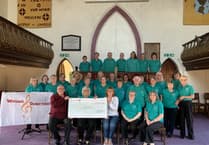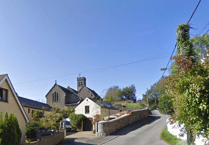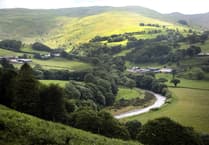The auction will take place on Wednesday, February 8, at Farleigh Court Golf Club, Selsdon in Surrey.
Dating from 1821-1829, the archive is estimate at £6,000-8,000 and is being sold by descendants of the Starbuck family.
The Starbuck family were prominent in the anti-slavery movement both in the UK and the USA. Having been involved in the founding of Nantucket, members of the family emigrated to Milford Haven in Pembrokeshire, after the American Revolutionary War and continued their successful whaling business.
The family who were Quakers were active abolitionists throughout the 18th and 19th centuries.
As Catherine Southon commented: “This is a wonderfully fascinating archive which includes an array of historically important documents that we believe should be shared to educate further on this subject. The documents have been inherited and passed down through the family.”
The archive is bound together in an album, containing over 60 pages of documents, the majority being period hand-written copies of letters written by Starbuck together with related printed documents, several being numbered letters having been sent to important recipients/ prominent abolitionists.
One to The Anti-Slavery Society, London includes one entitled Purchasing, the Freedom of, and giving, a Christian Education to Slave Children dated 11th 2nd month 1828 and signed by Samuel Starbuck.
Also included is a heavily inscribed copy of Storage of the British Slave Ship Brookes under the Regulated Slave Trade, Act of 1788 detailing the conditions and exact measurements of the hold of the ship, deck, gun room, numbers of prisoners in areas of ship, inscribed to top Slave Ship Brookes as Measured at Liverpool by Captain Paney of the Royal Navy by Order of Parliament 1788, length of lower deck, seatings and balk heads, included within AA 100 feet.
In response to this Starbuck’s commented: “This engraving therefore, speaks for itself.
“It shows that the sufferings of the poor slaves, for want of room and as must be suffocating as we have described thus? for if when 451 Slaves are placed in the different rooms as prisoners of the Ship Brookes, not only the floors and the platforms are entirely covered with bodies, but the bodies actually touch each other how wretched must have been their situations.”
Another letter is titled Emancipation and dated April 1823 was subsequently published in the Cambrian Newspaper in May 1823 and includes the comment: “The Abolition of the Slave Trade and the abolition of slavery, are two very different things. The abolition of the African Slave trade was officially in 1807, but slavery in those West Indies colonies now exists with all its horror and with punishment and torturing even unto death.”
The archives included numerous transcripts signed by Starbuck; copies of letters to newspapers in London and Wales as well as to the Duke of Wellington.
One letter to the Editor of the Carmarthen Journal states: “Two million pounds sterling annually in support of the interminable condition of Slavery. There has been two plans submitted to Public for emancipating the slaves by purchase.
“One that of buying the freedom of all female slaves of forty years of under, when as by the slave laws, the mother carries the property in all her children all born after her manumission would be free.”
Elsewhere: “To his Grace Arthur Duke of Wellington, First Lord of His Majesty’s Treasury, London, Samuel Starbuck with his best respects takes leave here to present his ideas of Plan for the abolition and extinction of slavery”
At the rear of the volume are letters in response to Starbuck including those from members of the Anti-Slavery Society, some addressed to George Starbuck from Daniel Starbuck, one dated 1823: “My dear cousin George, I am appointed by the Committee for the abolition of slavery here, to correspond with you on the propriety of forming a society in Pembroke.”




.jpeg?width=209&height=140&crop=209:145,smart&quality=75)
Comments
This article has no comments yet. Be the first to leave a comment.